How Technology Aids Dental Implant Therapy
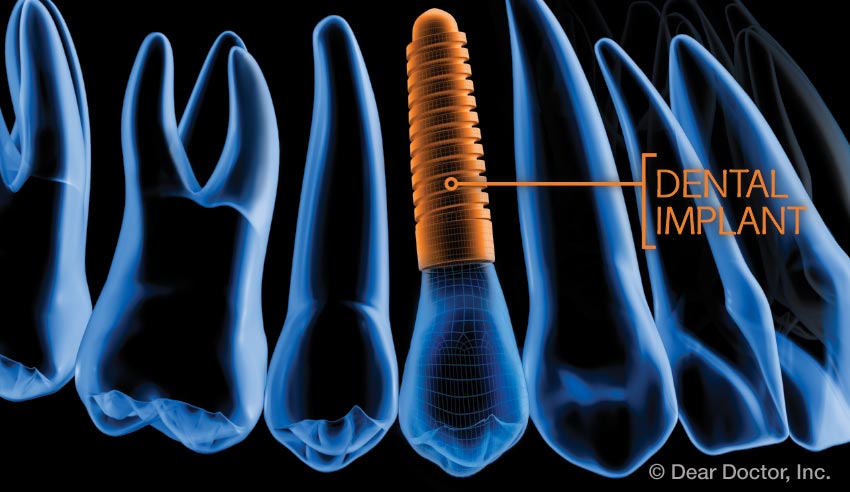 |
Dental Implants are today's preferred solution to the problem of missing teeth. These state-of-the-art devices boast an impressive track record: They have been routinely used in North America for over four decades, and have a success rate above 95 percent. Yet dental manufacturers and researchers aren't standing still: They are constantly making new advances to implant systems — improving both the implants themselves and the technology that supports them. Here's a look at some of the latest innovations in this cutting-edge field.
CT/CBCT Scanning
Besides teeth and gums, the jaws and face also contain nerves, sinuses and other structures. Dentists who perform the minor surgical operation to place implants in the jaw often need to know the exact location of anatomical structures that lie hidden beneath the gums. That's where high-tech diagnostic imaging such as CT scanners and CBCT scanners can help. A CT (computed tomography) scanner takes a series of digital x-rays and combines them into a single 3-D image. Cone beam CT scanners (CBCTs) use a newer technology that can produce the complete 3-D image faster using a much smaller piece of equipment. These high-tech machines have become valuable diagnostic tools for the implant procedure.
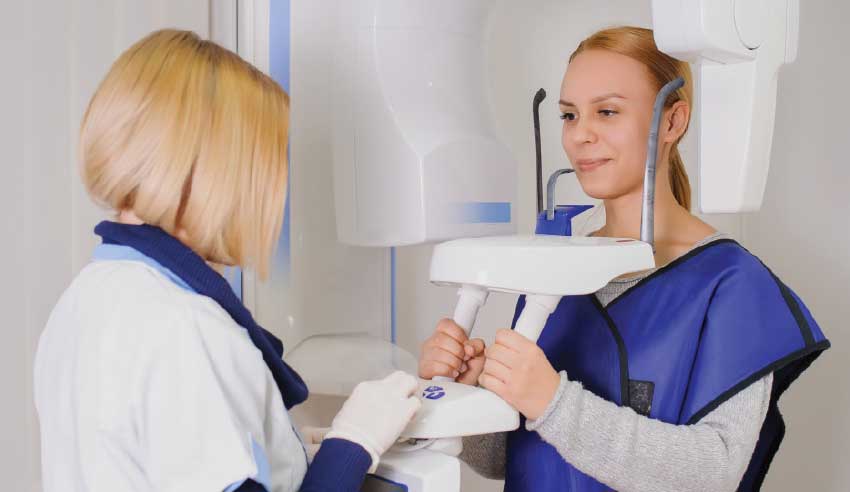 |
| Cone beam CT scanners use a spiral beam of digital x-rays to produce a high-resolution image that allows dentists to identify the location of nerves, sinus cavities, and the quality and quantity of bone tissue. |
By using a CT or CBCT scanner, a dentist can see the exact position of nerves, where sinus cavities come close to the jawbone, and even the amount and quality of the bone itself. What's more, the scans can help pinpoint the best possible location for the titanium implants, based on each individual's particular anatomy.
A CT/CBCT scan isn't always required to get a dental implant; however, it's a great diagnostic tool and is often needed when a lack of sufficient bone, many missing teeth, or other issues raise questions about the optimal placement of implants. Because CT/CBCT scans involve exposure to a modest amount of radiation, this small risk must be weighed against the procedure's known benefits. Your dentist will determine whether CT or CBCT scans are needed in your situation.
Digital Imaging & Virtual Treatment Planning
In conjunction with the images obtained from scans, powerful computers and specialized software are increasingly finding applications in different phases of implant treatment. Digital image processing software is capable of producing a 3-D model of an individual's mouth, which can be rotated, enlarged, and viewed from any angle. These detailed digital models show not only the teeth, jaws and other structures that exist now — they can also show what your smile will look like after treatment.
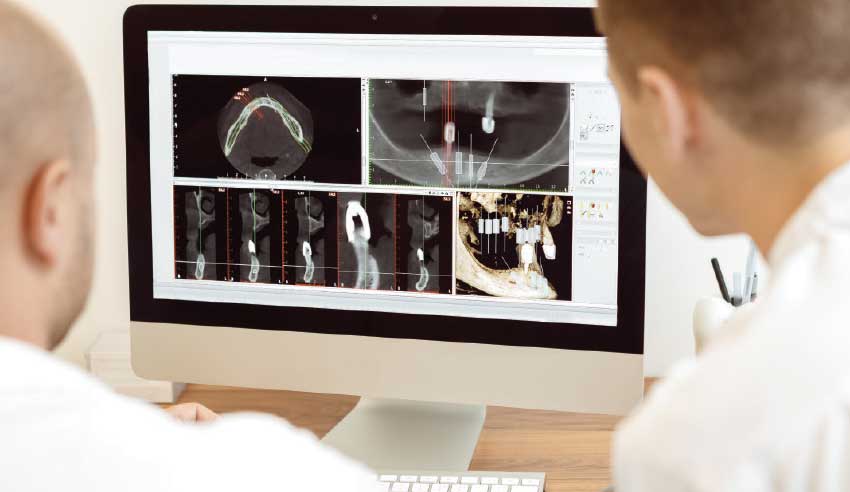 |
When used as part of a treatment planning system, your dentist can virtually plan the entire implant procedure in advance — even trying out different sized implants in various positions, to come up with an optimal solution for your situation. Because it's all done on the computer, there's no need for the patient to be present at this stage. But when it's time to come in for the procedure, the advance planning truly pays off: It can make your implant surgery faster, less invasive and more predictable.
Custom-made Surgical Guides
A surgical guide is a custom-made device that is manufactured to fit your anatomy: the particular contours of your gums, and the specific implants you will receive. It is designed to help dentists put dental implants in exactly the right location in your jaw. Using a surgical guide, your dentist can be sure that an implant will be placed at a precise position, angle, and depth. Proper positioning helps your new teeth function optimally and securely for years to come.
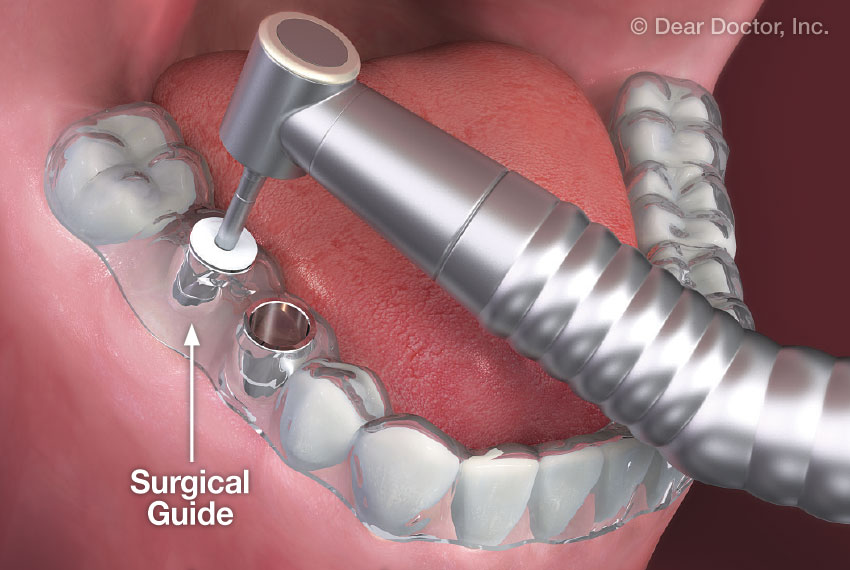 |
| A surgical guide facilitates proper placement of implants. |
Surgical guides are individually produced via 3-D printing or other advanced manufacturing methods, using the digital information that was obtained from scans of your mouth. Their pinpoint accuracy comes from the precision of the digital scan. Guides are designed to be used with a special set of guided dental instruments, and allow the instruments to move in specific, controlled ways. For example, when your treatment plan calls for a certain size of implant to be inserted with a particular orientation, the guide helps your dentist locate the exact spot and ensures that the implant is placed with the precise angle and depth.
Surgical guides are temporarily secured to adjacent teeth or the jawbone during the implant procedure. When multiple implants are needed, one guide may be used to place all of the implants in one arch (top or bottom row of teeth). The use of a guide allows implants to be placed with greater precision and reliability, and may allow you to spend less time in the dental chair.
Digital Impressions
If you are missing only some teeth, your dentist will want to be sure that the crowns (visible parts) of your new implant teeth will properly match your existing teeth. Whether you are replacing some or all teeth, you will probably want to see that your new smile will appear natural and aesthetically pleasing. This can be accomplished by making a model of your teeth as they appear both before and after treatment. In the past, dentists made models by taking impressions with a putty-like substance placed in a tray inside your mouth. Today, it's possible to make those same models using digital impressions.
With digital impressions, a wand-like device is used to scan the exact shape and position of your teeth and gums. The process is similar to a CT scan — except that light rays are used instead of x-rays, and only the surface contours are recorded. Image-processing software takes the readings and constructs a virtual 3-D surface model of your gums and teeth, which can be used to make a physical model. Having a precise model of your mouth can help your dentist design implant crowns that will fit perfectly in your smile. It can also show you exactly what the end result of your treatment will be.
Putting It All Together
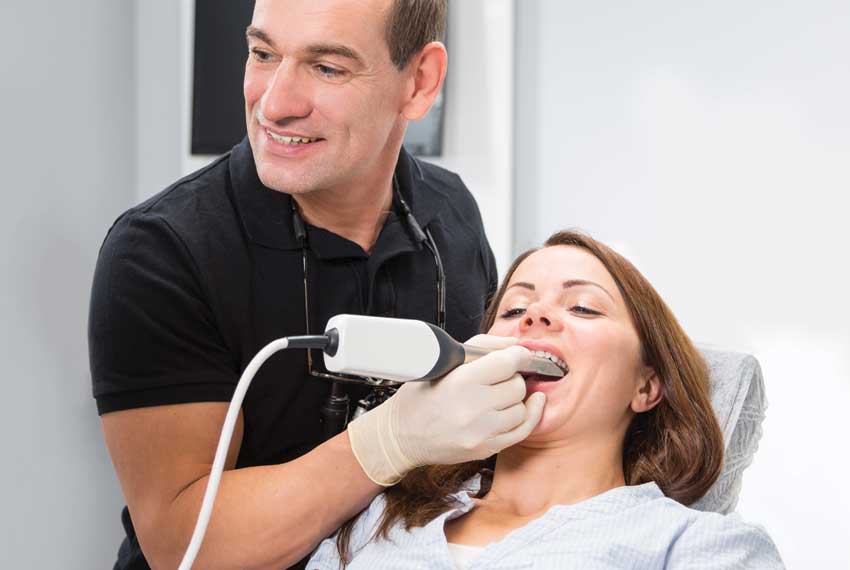 |
| A digital scanner creates a virtual dental model; that information goes to a computer-controlled milling machine to fabricate a custom-made crown. |
Current computer and software systems make it possible to integrate many of these technologies to leverage their benefits. For example, when the data sets from digital impressions and CT/CBCT scans are combined, the result is a more complete virtual model of the mouth, showing both visible features and structures that lie beneath the gums. This can in turn be used to produce even more accurate treatment plans and surgical guides. Information from this model can also used by computer-controlled milling machines to produce implant crowns that are custom-made just for you, reducing the number of try-in appointments and ensuring accuracy and aesthetics.
The convergence of several innovative technologies places implant dentistry on the cutting edge of medical treatment. Using advanced diagnostic imaging, computer-aided manufacturing, guided surgery and virtual treatment planning, dentists are providing implants with greater precision, accuracy and efficiency; and many patients are enjoying the benefits of dental implants with more conservative treatment and less time in the chair.





